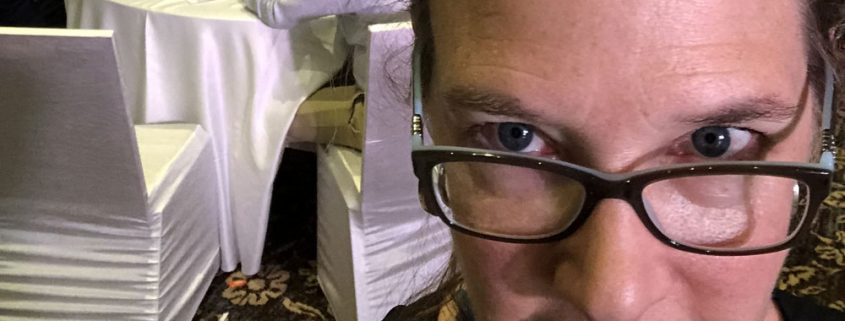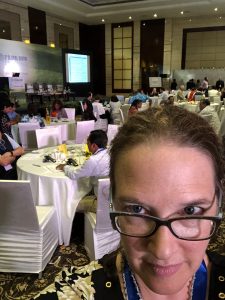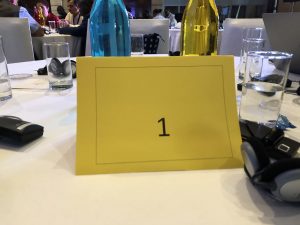Who’s Learning in YOUR Community Learning Meeting?
Bringing together a large global community of people for learning is a considerable investment in time and money. Planning can start 6-8 months or more in advance, and for large communities entail hundreds of flights and hotel rooms, vast conference facilities, a team of interpreters, an army of VIP handlers and rafts of protocol.
Meeting hosts can get easily bogged down in the mechanics, which are also important for learning. Comfortable, happy, secure, well-fed people can concentrate on learning in an environment foreign to their own everyday workplaces. This should never be underestimated. But this blog post focuses on the programmatic part of community learning meetings.
It is very tempting, also, for the meeting managers to focus on what THEY want to learn. After all, they manage the overall programme and their reward system involves having good knowledge about the various country projects and activities and people that are under their purview. Perhaps communication between country projects and HQ is not always forthcoming, as people are busy doing the projects and reporting takes extra time and effort, plus how do you organize all that data dribbling in in various formats over the year? The meeting manager wants to download everything that has happened in the last year in every project because they want to tell these stories, and also write the donors’ reports, and the proposal for the next project installment, etc. etc. Information is king!
But information is not learning, and it also doesn’t make sense to fly everyone in for three days to a location far far away to give PPT speeches one after another to a plenary room full of bored participants in three languages.
Of course, if necessary, there are things you can do to help make a long list of speeches more palatable to people. See my past blog posts 18 Presentations in a row? What can you do? and Preparing a Pecha Kucha: One pragmatic approach for some tips. But it is better to try to expand your mental model of learning from what you, the organizer and programme manager wants to learn, to include what participants want to learn.
Do you know?
It can be as easy as asking – two different groups that we have been working with have recently hosted large global and regional community learning meetings, and their processes started with a survey to participants asking them what content areas they would like to learn more about, both from external content experts and from each other. These kinds of surveys produce a long list, but also indicate group priorities that can be woven into plenary sessions, for the topics with the most support, and themes for parallel breakout sessions for others. Considering the placement of learning themes in the programme is important – reserve plenary sessions for topics that the majority of people are interested in as people don’t have a choice for plenaries (except whether or not to go) and often no voice because Q&A in a plenary of 250 people is never going to be long enough to hear from more than 2-3 people waving their hands wildly in the air. So unless you build in table-level discussions, people cannot ask questions or customise their learning very much in plenaries. It is all supply side thinking that goes into designing these types of whole group sessions – what do we want people to hear and who do we want them to hear it from?
Learning from Case Studies?
Having lots of other opportunities for learning takes the pressure off of plenaries, and can satisfy the multiplicity of learning needs. Thematic parallel sessions can feature case studies from country projects and allow participants to choose where they go to learn. But even learning from case studies is not always obvious unless they are prepared with drawing out reusable learning in mind. There is a temptation in case studies to make them highly context specific. Often the case study presenter spends a lot of time on context, the more the learning appears context dependent the harder it is for listeners/learners to extrapolate the reusable learning elements. Of course it depends on your goal for learning again. The programme manager’s goal is to understand what is happening in Country X, what is working and what needs to be strengthened, etc. For other country project participants, they are not necessarily there to learn about Country X particularly, because they come from Country Y. They want ideas, innovations, things to try, things to avoid, useful processes and approaches they can adapt to their own context, based on evidence that they have worked in other places. They are not usually there to learn something point by point to replicate it exactly. This also means in your design, you need to have ample time before or after a case study is presented for people to ask questions and consider adaptation and application to their context. You can of course leave this up to them to pursue speakers at the coffee breaks, but you are missing an opportunity to foster immediate learning if your parallel session or breakout doesn’t feature some reflection and processing time.
Learning in Open Space Sessions
Another way to integrate learning opportunities into your programme is to introduce Open Space Technology (OST) sessions, which work even for very large groups. In an OST session, anyone can propose a table discussion theme, and submit it in advance. These are scheduled by assigning a table number and a time slot for each proposed topic. During a series of rounds, those not hosting discussions at a designated table can attend other discussions of their choice. Putting something like “Community Open Space” on an agenda with no substantive pre-cooked themes might seem risky to programme organizers. But in all the times I have organized these, for groups from 25 to 250 people, they have come together beautifully, with a smorgasbord of offerings and been highly appreciated. When OST sessions are featured towards the end of a learning meeting, they allow people to fill gaps in their learning needs, test new ideas they gained from the meeting with other potential collaborators, and also give the programme organizers a chance to add in things that they missed, provide more time for discussion on a hot topic, or satisfy new learning needs that emerged during the event. For his to work, you need to give people advance notice about this opportunity on your first day, but don’t be surprised if OST topics only come in the morning of your session. The mechanics of Open Space and some tips can be found here Opening Space for Conversation (and Eating Croissants) and generally you only need your plenary room (with table seating, not theatre format), table numbers (so people know where to go at the designated time), cards for collecting host ideas, and then your schedule on PPT for table allocations per topic (see below). Again, programme managers can participate, both as hosts and participants, so your learning is also assured!
Community Marketplaces and More
If you really just need data from every country as the overall Programme Manager, poster sessions can be useful ways to encourage this sharing, as country project officers need to fill in your e-template with key information and get the files to you for printing (or bring them printed) in advance. However, poster sessions can be variable in terms of their attendance and utility for other participants. If the posters are placed strategically (by the coffee table), you get browsers who might scan them. But you can get more attention if you create some buzz around the posters, perhaps adding tables for the display of documentation and 3D objects that attract passers-by. Having a dedicated place for the posters is good, and even better is having a dedicated session that gets people into the space and programmes that time. Call it a “Community Marketplace”, give it 2 hours during your agenda at the end of one day, serve drinks in the space at the end of the time slot, and have microphones available to announce in-session events. What events? I recently worked at a large community meeting that had such a Marketplace and during the two hours there was an MOU signing between two Ministries in one country (so a few super short speeches, a handshake, applause and lots of camera equipment), and the announcement of winners of a Photo Competition (again microphones, photo opps, prizes and lots of clapping).
The Marketplace went one step further and scheduled times when regions were standing at their posters to answer questions. At the onset of each 30 minute regional “session” (in quotes as in the marketplace it is a bazaar environment with lots of talking and milling around, you can’t get too stressed about the chaordic nature of this kind of event), the microphone was given to a regional representative who said a few words about the relevant work in the region, what is most interesting, and announced the countries who would be standing at their posters for the next 30 minutes. Then people could go and find them if they wanted. This worked fairly well, and for the most part people went around to talk to some of the countries featured during their time slot. As there were multiple reps from each country this morphed into an open ongoing exchange, and still the calling to attention each 30 minutes of a voice from a new region provided some scaffolding to help structure and give some buzz to the Community Marketplace session.
Of course, learning also happens in coffee breaks and lunch, and extending these by 30 minutes can help conversations deepen and give time for reflection. Instead of 15 minute coffee breaks, can they be 30 minutes (for larger groups this is the only realistic option anyways), and can lunches be 90 minutes rather than one hour? This also gives the Programme Manager time to find the people she/he wants to talk to for more information on their activities before they fly home.
Ultimately, it’s not an either or – either the Programme Manager learns or the participants do. In fact, with the participants also in mind, the learning from Community Meetings can be even richer. You just need to not worry too much about controlling every aspect of the agenda by having everything in plenary and all front-loaded. For your courage, you will be richly rewarded with enthusiastic feedback and the most important result – real community learning that makes the next stage of the process even better!









Leave a Reply
Want to join the discussion?Feel free to contribute!